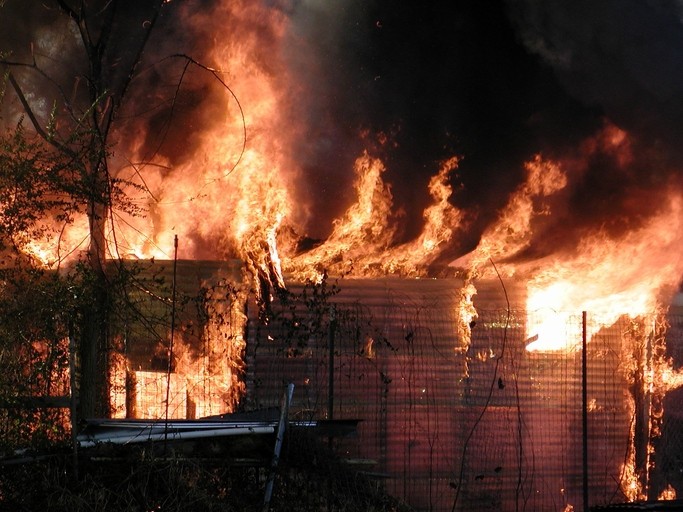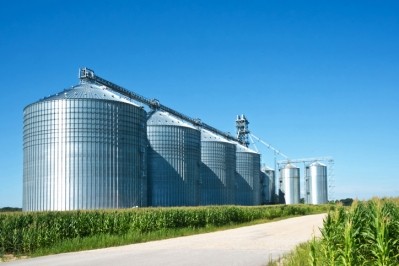ADM faces federal fine following fatality at Iowa grain silo

OSHA’s inspection of the ADM facility in Clinton, Iowa followed a feed bin fire and an explosion in January that killed one responding firefighter and injured another.
Iowa OSHA issued ADM five citations, including one that said firefighters were not given adequate information to tackle the fire.
The agency says BWC was cited because its employees assigned special tasks at the facility, such as bin entry and the handling of flammable or toxic substances, were not trained to safely perform the tasks.
ADM and BWC did not respond to a request for comment by press time.
Feed bin incident background and overview
“The fire and explosion occurred at Archer Daniels Midland Company (ADM) in silo #2 which contained an undetermined amount of gluten feed pellets that had become bridged,” OSHA said in an inspection narrative report. “Although the size and density of the bridge would indicate a gradual formation, ADM claims it was not detected until the silo had completely bridged over.”
In mid-October it was noted that the silo at ADM's facility was completely blocked by feed pellets that had bridged over, according to the agency's report. ADM hired two contractors – Industrial Silosource (IS) and BWC Industrial Services (BWC) to remove the material.
IS specializes in silo or bulk storage “cleaning, inspecting, engineering, maintenance, and repair,” the agency said. The company was hired to remove the bridged material in the silo.
The silo is 100 feet tall with a 24-foot diameter and is used as an overflow vessel, the agency said. It is one of six connected silos.
When IS examined the facility, it reported that the bridge was about 30 feet thick and dense in consistency, OSHA said. The company was reportedly told about 400 tons of material were in the silo.
IS attempted to remove the feed pellets using high-pressure air from November 2 through to November 18 and BWC also worked to remove the block, the agency said. Water was added the material by BWC, which caused the pellets to swell.
IS left mid-project, although accounts to what transpired differed, according to the report.
BWC continued work to remove the bridge using “lancing and injecting high-pressure water,” until the fire and explosion, OSHA said in the report.
“In the days leading up to the explosion, enough of the bridge had been removed that large chunks of the bridged pellets had fallen into the cone of the silo,” according to the report. “It was during this time that BWC staff noticed that the product was hot, smoldering and black in color. BWC state that ADM management noticed the change in the product or debris and stopped to investigate by feeling a handful of the debris.”
“After a brief conversation about the hot material, BWC was instructed to continue their work with no changes,” the report added.
On January 5, employees with BWC started work on the remaining bridged material at about 5.30 am and found smoke and flames, which were reported to ADM, OSHA said. The fire was reported at 5.45 am and ADM “established incident command.”
The fire department arrived about 6 am, and met with ADM’s incident command, according to the report. The fire department asked about the possibility of applying water to the fire through a side hatch in the silo but objections to that plan were made “based on a lack of knowledge regarding the quality or condition of the material in the silo and whether or not the material was above or below the side hatch.”
“CFD was told that an explosion hazard did not exist since contractors had been applying water for several days,” OSHA said in its report. An attempt to address the fire through a lower trench was made but was not successful as was an attempt to apply water to the top of the silo using a ladder truck.
A different plan to address the fire from the top of the silo saw firefighters designated to take 50 feet of hose to the top of the silo and apply water to the fire, according to the report. Two firefighters then applied water through an opening in the roof of the silo.
“At some point, BWC foreman informed firefighting personnel that a smoldering fire had existed in the silo for two to three days prior to the explosion,” the agency said. “The foreman stated that they had been managing the fire with a 1½ inch hose as they worked.”
While the water was being applied from the top of the silo, a shift change occurred for members of the fire department and ADM employees and the new ADM incident command suggested water could have been applied through the side hatch, the agency said. Water was applied from the top of the facility for about 10 minutes before the explosion occurred.
One firefighter fell from the top of the silo to the ground and sustained fatal injuries, OSHA said. The other firefighter was eventually located inside the silo using an inspection port on the side hatch.
“During the initial stages of the emergency response, neither ADM nor BWC informed fire department staff that the inspection port existed and could be utilized to determine the conditions inside the silo,” the agency said. “ADM did not tell CFD that BWC had been working inside the silo and would have first-hand knowledge of the silo content and condition."
Citation details
Following the inspection, ADM faces five citations and $55,894 in fines, OSHA said. The company had 15 days to respond to the citations and chose to contest them.
The Illinois-based company was cited for not providing a place of employment that was free from “recognized hazards,” said OSHA. Roles for employees in an emergency were not clear, the response system did not provide needed information and the process to work with outside responders was unclear.
The company also did not provide employees with the correct equipment in an emergency, the agency said. “The employer did not ensure that an employee responding to a fire emergency was protected by proper respiratory protection,” it added.
ADM was also cited for failing to provide failed to provide training to employees in several areas including on the correct equipment to address fire and on how to manage incipient stage fires, the agency said. The training program for employees taught to use firefighting equipment demonstrates the use of a fire extinguisher, not fire hoses or standpipes although both are located throughout the facility for use in an emergency.
“The employer failed to provide adequate and effective training to employees who act as incident commander during fires or other emergencies,” the agency said. “Pertinent information relating to the amount and condition of the grain contained in the silo was not gathered. This condition exposed employees, outside contractors and municipal firefighting personnel to heightened fire and explosion hazards during an incident.2
Additionally, Bill Whitter’s Construction, LLC (BWC), was cited and fined $7,760 following the inspection for not providing necessary training to employees to allow them to perform special tasks safely.
“Employees provided assistance and support during firefighting efforts had not been trained to the level of his participation,” OSHA said. Employees were exposed to hazards including smoke inhalation, struck-by hazards and burns.













